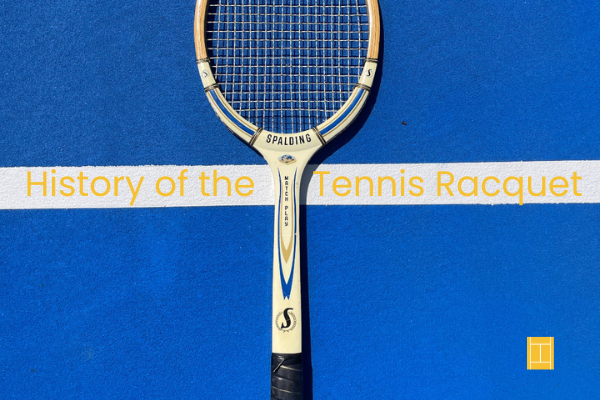
The History of Tennis Racquets: From Wooden Tennis Rackets to Vintage Collectibles
If there’s one thing I’ll forever romanticize about tennis, it’s the racquet. Yes—racquet. (We’ll talk about racket in a minute.) Words evolve, just like gear does, and this one word has carried centuries of craftsmanship, culture, and a little controversy across the net.
The Wooden Era: Craft and Charm
For most of lawn tennis history, players used wooden tennis rackets—laminated ash and beech beauties that rewarded feel, touch, and impeccable timing. Classics like the Dunlop Maxply Fort were everywhere in the mid-20th century, beloved by pros and weekend players alike. Rod Laver famously won with a Maxply in 1962 and 1969, cementing its legend.
Metal Disrupts Tradition
The late 1960s brought steel and aluminum. Wilson’s T-2000—designed by René Lacoste in 1953 and introduced widely in 1967—put a futuristic gleam on center court. Billie Jean King used it early on; Jimmy Connors made it iconic. The T-2000 had power to burn and a distinctly different feel from wood, accelerating the game’s pace.
Graphite Changes Everything
By the late ’70s and early ’80s, graphite entered the chat—lighter, stiffer, and more controllable. Prince’s Original Graphite (hello, POG) helped usher in the modern power-baseline era while keeping precision intact. From there, composites kept evolving, and today’s frames are feats of materials science.
Racquet or Racket? (And Why I Choose “Racquet”)
Both spellings are legitimate. Racket is the older English form (16th century, via Old French), and many style guides—and even the International Tennis Federation—lean that way. Racquet rose in the 19th century with French influence and is favored in Britain and across tennis culture. I choose racquet for its elegance and heritage—but you’ll see both in the wild (and in search).
Why Collect Vintage Tennis Racquets
Design lovers and tennis romantics know: vintage tennis racquets are story pieces. Leather grips worn smooth. Laminated wood that glows in the light. A silhouette that says, “Respect your angles.” They look incredible on a gallery wall, in a study, or courtside vignette—and they connect you to the game’s soul.
A Few Standouts in Our Collection
As of today, you’ll find hand-picked classics in the Vintage Tennis Racquets collection at Tennis DuJour, including:
-
Vintage Spalding Pancho Gonzales Wooden Tennis Racquet (1960s–70s) — bold, charismatic, and era-defining.
-
Vintage Spalding Pancho Gonzales Tournament Wooden Racquet (1960s–70s) — a collector’s nod to a showman’s specs.
-
Vintage Spalding Rosemary Casals Wooden Tennis Racquet (1970s) — a signature model with historical charm.
-
Spalding Match Play Vintage Racquet — a versatile display piece with court-worn character.
-
Vintage Bancroft Newport Wooden Tennis Racquet w/ Original Press (1960s–70s) — pure Americana; Bancroft’s roots trace to the 1880s.
What is “POG”?

If you’ve ever heard a tennis fan throw around the word POG, they’re talking about the Prince Original Graphite.
Launched in 1980, the POG was one of the first widebody graphite tennis racquets, and it absolutely changed the game. With its oversized 110 sq. in. head, it offered a larger sweet spot, more forgiveness, and a perfect balance of power and control.
Andre Agassi, Michael Chang, and Gabriela Sabatini all made their mark swinging a POG, and it quickly became the gold standard for players transitioning from wood to modern frames.
Today, the Prince Original Graphite (POG) is considered one of the most collectible and playable “vintage graphite” racquets—a cult classic that still turns heads both on and off the court.
The Takeaway
From wooden tennis racket grace to graphite-driven power, the racquet’s evolution mirrors tennis itself: faster, smarter, and still achingly beautiful. Whether you’re curating a wall or chasing that sweet, centered hit, every vintage tennis racquet carries a chapter of the game’s living history.
Explore the full collection of Vintage Tennis Racquets at Tennis DuJour: https://tennisdujour.com/collections/racquets
